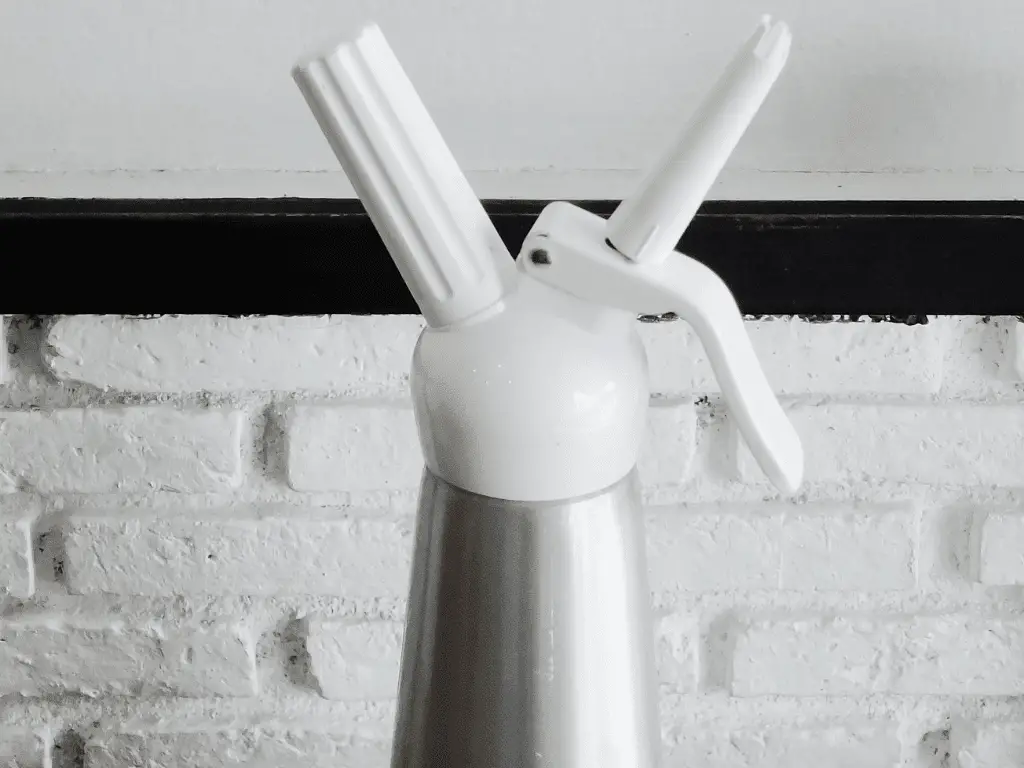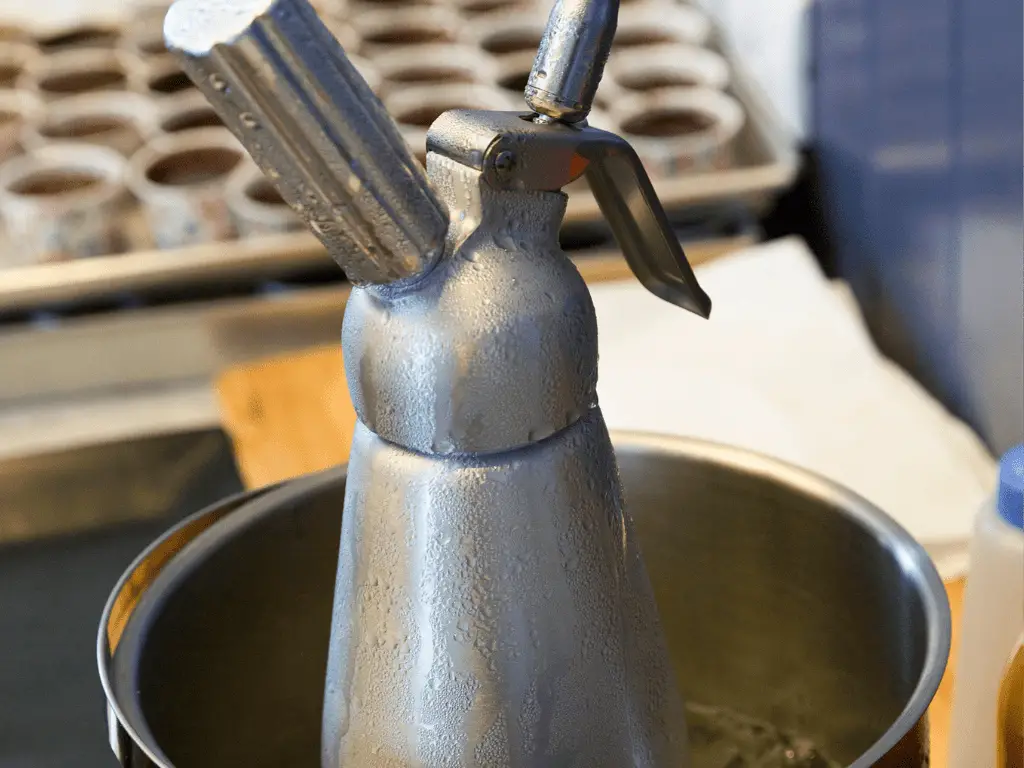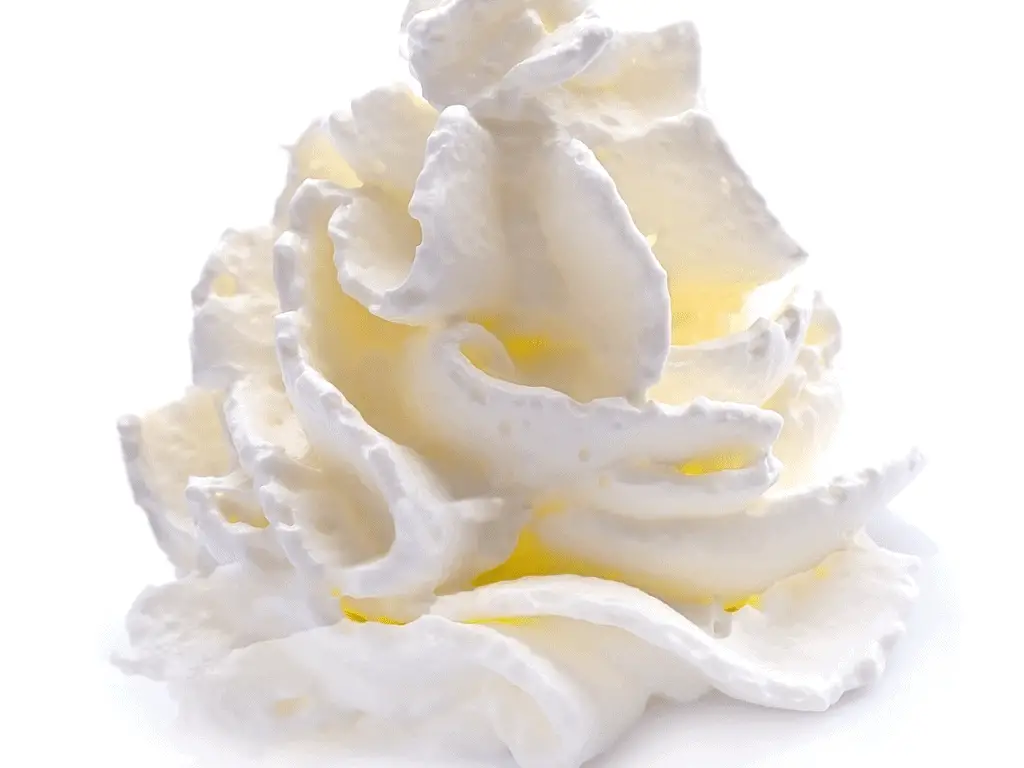
Do you love the taste of whipped cream but hate all the chemicals in store-bought brands? If so, then you’ll want to learn about whipped cream dispensers.
These handy devices allow you to whip up your own fresh, homemade whipped cream in just seconds. Plus, they’re really easy to use.
In this article, we’ll discuss everything you need to know about whipped cream dispensers, including how they work, what types of cream and gas to use, and some tips for getting the best results.
As any baker knows, whipping cream is a key ingredient in many delicious desserts. However, it can be notoriously difficult to work with. Traditional methods of whipping cream often result in a sticky, clumpy mess.
But with a whipped cream dispenser, you can enjoy perfectly smooth and fluffy whipped cream every time. Simply insert the cream into the device and screw on the lid. Then, press the lever to release 8-gram gas bulbs into the canister.
The gas will instantly dissolve into the liquids, pressurizing the contents and making it easy to dispense a beautiful dollop of whipped cream onto your favorite dessert.
Plus, cleanup is a breeze – just unscrew the lid and wash by hand or in the dishwasher. With a whipped cream dispenser, you’ll be able to enjoy perfectly sweetened and deliciously creamy desserts in no time!
How Whipped Cream Dispensers Works
Whipped cream dispensers work by using nitrous oxide (N2O) gas to aerate whipping cream and turn it into a light, fluffy substance. Nitrous oxide is a colorless, odorless gas that is commonly used in food preparation.
When nitrous oxide is combined with fat molecules in whipping cream, it creates a stable foam that can be used as a topping or filling for various desserts and drinks.
To use a whipped cream dispenser, simply place whipping cream into the device and screw on the lid. Then, charge the dispenser with nitrous oxide gas cartridges (which can be bought online or at some kitchen supply stores).
Once the dispenser is charged, simply shake it up. When you open the valve on a cream dispenser, the liquid is forced out of the nozzle by high pressure.
This expands the bubbles and transforms the liquid into a whip, mousse or foam. Then dispense the whipped cream into a bowl or directly onto your dessert. It’s that easy!

What Types of Cream to Use
Not all whipping creams are created equal. For best results, you’ll want to use a whipping cream that has a high fat content (30% or higher). This will help ensure that the nitrous oxide gas can properly interact with the fats and produce a stable foam.
Unfortunately, many store-bought brands of whipping cream have a lower fat content (18-20%), so they may not work as well in a whipped cream dispenser. However, you can usually find high-fat whipping cream at specialty grocery stores or online.
When thinking of liquids that create whip’s, mousses or foams, milk and egg whites might come to mind. Egg whites are able to be whipped into a stable foam because of their high protein content. The proteins unfold and link together when air is added, trapping the air bubbles and creating a foam. Milk also has a high protein content, but it also contains fat.
When whipping milk, the fat globules get in the way of the proteins linking together, which is why milk is not able to be whipped into a stable foam like egg whites can. When trying to infuse liquids, fat also gets in the way and prevents flavor from being infused as easily as with water.
This is why most people prefer to use water when making things like iced tea or coffee. However, all liquids can be infused if given enough time. This is because even though fat globules prevent flavors from diffusing as quickly as with water, they will eventually diffuse into the liquid.
So, even though it might take longer for flavors to infuse into milk than it would with water, it is still possible to infuse the milk with flavor.
What type of gas to use?
If you plan on whipping up some cream or inflating a balloon, you’ll need to purchase a canister of nitrous oxide. But not just any gas will do – only 8-gram nitrous oxide chargers (N2O) will work with our whipped cream maker. Why is that?
The answer has to do with pressure. When nitrous oxide is stored in a canister, it’s under high pressure. That pressure is released when you open the valve, and it’s what allows the gas to flow into whatever container you’re using.
Our whipped cream maker is designed to work with canisters that have been charged with 8 grams of nitrous oxide. That’s the perfect amount of pressure to give you consistent results, every time. So when you’re shopping for gas, be sure to pick up an 8-gram charger – anything else just won’t cut it.
How to Keep Your Whipped Cream Dispenser Clean
Like any other kitchen tool, it’s important to keep your whipped cream dispenser clean.
A dirty whipped cream dispenser can harbor all sorts of harmful bacteria, which can then be transferred to food or drinks. This is especially dangerous if you’re using your dispenser to make food or drinks for other people, such as homemade salad dressing or whipped cream for coffee.
In addition to the risk of food poisoning, a dirty whipped cream dispenser can also lead to subpar results when you use it. So if you want your whipped cream to be light and fluffy, or your salad dressing to be smooth and flavorful, it’s important to keep your dispenser clean.
How to Clean Your Whipped Cream Dispenser Manually
The first step is to remove the lid and any attachments, such as the nozzle. If there are any stubborn pieces of food stuck on the attachments, soak them in warm soapy water for a few minutes before scrubbing with a brush. Once the attachments are clean, wash them in warm soapy water along with the lid.
Next, fill the barrel of the dispenser with warm soapy water and let it soak for a few minutes. Then, use a brush to remove any remaining debris before rinsing thoroughly with clean water. Be sure to rinse the barrel several times until all traces of soap are gone; otherwise, your food or drink will have a soapy taste. Finally, dry all parts of the whip cream dispenser with a clean towel before reassembling it.
How to Wash Your Whipped Cream Dispenser in the Dishwasher
Some parts of a whip cream dispenser (such as the barrel) are dishwasher-safe. Before washing any part of your whip cream dispenser in the dishwasher, check the manufacturer’s instructions to be sure. When in doubt, err on the side of caution and wash those parts by hand using the method described above.
Once you’ve determined which parts of your whip cream dispenser are dishwasher-safe, disassemble those parts and place them on the top rack of your dishwasher. Be sure not to put any plastic parts in direct contact with heating elements as this could damage them. After running your dishwasher according to its normal cycle, reassemble your whip cream dispenser and store it in a cool, dry place until you’re ready to use it again.
Frequently Encountered problems

Dispensers can be a real hassle when they’re not working properly. Whether your dispenser is stuck or not yielding any cream, it can be frustrating. Here are some tips on how to fix a dispenser that’s stuck or isn’t yielding cream. Hopefully, this will help you to get your dispenser up and running again in no time!
If your dispenser is stuck:
- First, check to see if the canister is empty. If it is, simply replace it with a new one.
- If the canister isn’t empty, try running some hot water over the base of the dispenser. This will help to loosen any gunk that may be clogging it up.
- If hot water doesn’t do the trick, you may need to disassemble the dispenser and give it a good cleaning. Be sure to follow the manufacturer’s instructions on how to do this properly.
- Once you’ve cleaned it, reassemble the dispenser and try using it again.
If your dispenser isn’t yielding any cream:
- Make sure that the canister is properly inserted into the dispenser.
- Check to see if the nozzle is plugged up with any food particles. If so, clear it out and try again.
- If you’re still not having any luck, run some hot water over the base of the dispenser (as mentioned above). This will help to loosen any hardened cream that may be clogging it up.
- Once you’ve cleared out the clog, try using the dispense again. It should now be working properly!
Applications for Whipped Cream
There are endless possibilities for what you can do with whipped cream! Here are just a few ideas:
• Use it as a topping on cakes, pies, cupcakes, or ice cream
• Add it to coffee or hot chocolate
• Make homemade marshmallows by whisking air into the mixture
• Use it as a filling for cakes or pastries
• Pipe it onto strawberries or other fruit
• Garnish an alcoholic drink with a dollop of whipped cream
The sky’s the limit! Be creative and have fun experimenting with your whipped cream creations. Conclusion: Now that you know everything there is to know about whipped cream dispensers, what are you waiting for?
Get one for yourself and start whipping up some delicious concoctions! Not only are they fun to use, but they also allow you to control the ingredients in your whipped cream so you can avoid all those pesky chemicals found in store-bought brands.”